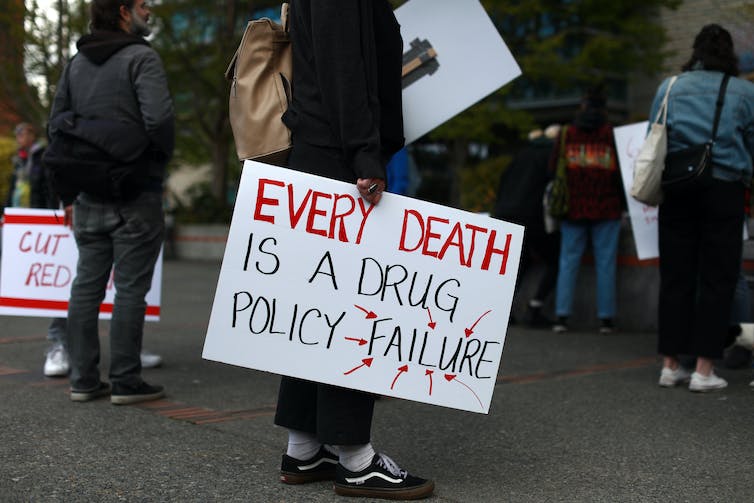Deaths of despair: How income inequality puts Canadian youth at risk

Income inequality has been linked to poor physical and mental health in past research, but more recent evidence suggests the issue of income inequality may be much more severe than previously expected.
While completing my PhD in epidemiology at the University of Alberta, I published a study highlighting an association between experiencing income inequality in youth and deaths of despair among young Canadians.
Deaths of despair are deaths attributable to suicide, drug overdose and alcohol-related liver disease. These deaths are on the rise in Canada, and finding points of intervention is key to reducing the burden of this crisis.
In collaboration with my doctoral supervisor, Roman Pabayo, I led a study on a representative sample of Canadian youth and followed them up over a 13-year period to calculate average hazard for deaths of despair. The study sample included 1.5 million Canadians between the ages of 0 and 19 from 2006 to 2018.
Income inequality and health
Areas where income inequality is higher are less likely to have the type of social programs that are key to improving the health of communities.
(Shutterstock)
Income inequality is the gap between the highest and lowest earners in a given area. It can contribute to people’s risk of poor health, and specifically mental health, in a few key ways.
First, in areas with higher income inequality, people are less likely to relate to their neighbours, regardless of whether they earn more or less income than they do. This can lead to social comparisons, which are detrimental for mental health and self esteem.
Secondly, this lack of connection with those around you — also called “social cohesion” — can cause mistrust and ill feelings about others. This in turn can lead people to become withdrawn or isolate themselves. Lack of social cohesion and isolation are both risk factors for poor mental health and substance use.
Finally, areas where income inequality is higher are less likely to have the type of social programs that are key to improving the health of communities. For example, divesting in mental health services and supports can lead to worsened mental health, and removal or lack of harm reduction services and mental health services can put people at a higher risk of deaths of despair.
Income inequality and deaths of despair

The overdose crisis has been called an epidemic and shows no signs of abating.
THE CANADIAN PRESS/Chad Hipolito
Deaths of despair are on the rise in Canada. Specifically, drug overdose death events have increased so rapidly that the drug poisoning crisis has been referred to as an epidemic. This is a major concern, as these deaths have strong impacts on the well-being of communities, families and friends; but also because this crisis doesn’t appear to be ending anytime soon.
The impact the crisis is having on young Canadians is especially important, considering that unfamiliarity with substances, lower tolerance and risk-taking behaviours may leave them at an increased risk for drug overdose. Further, suicide is a leading cause of death among young people in Canada, indicating a critical need to intervene.
The results of this new study also showed that higher levels of income inequality in youth are associated with an increased hazard of death from any cause, deaths of despair and drug overdose in young Canadians.
Urgent need for services

A Naloxone anti-overdose kit. Unfamiliarity with substances, lower tolerance and risk-taking behaviours may leave young people at greater risk for drug overdoses.
THE CANADIAN PRESS/Jonathan Hayward
My colleagues and I are continuing this work by investigating income inequality and deaths of despair in other populations by using other indicators of social equity. We are also investigating more harms we suspect are associated with income inequality, such as hospitalizations owing to despair.
This line of work shows the urgent need for increased access to health services such as counselling and harm reduction, particularly in areas of higher income inequality, to reduce the risk of deaths of despair in these spaces.
The study results should be communicated to policymakers, who inform discussions on reducing income inequality and harms due to drug overdose, suicide and alcohol-related liver disease. Programs to mitigate this problem may include cash transfer programs, increases to minimum wage, or universal basic income programs to reduce the gap between the highest and lowest earners.







